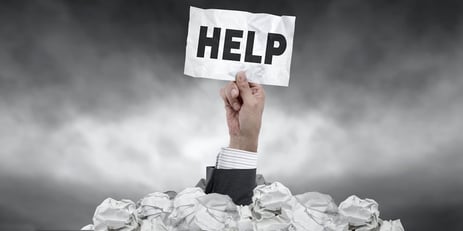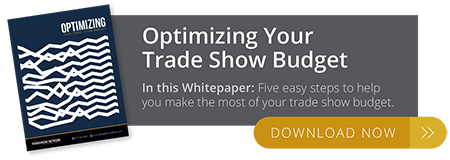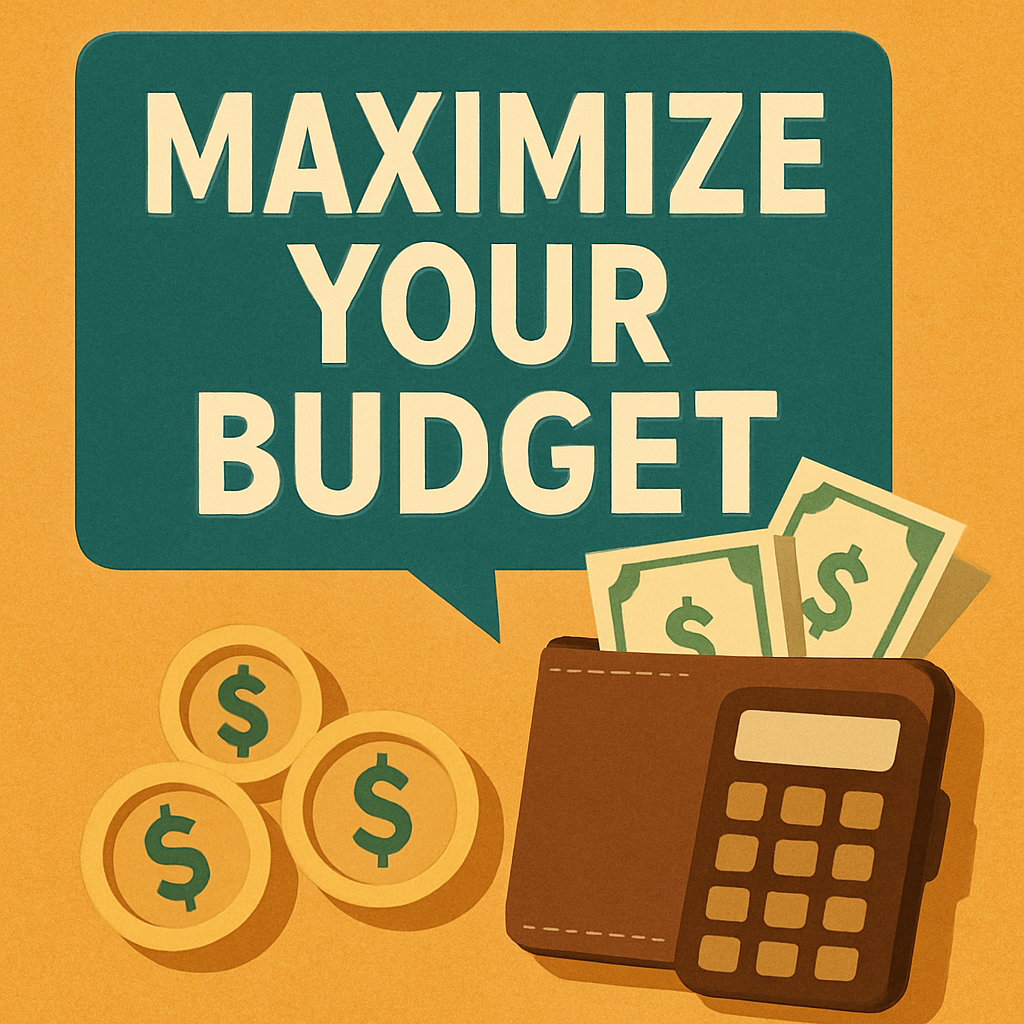You are starting the marketing planning process for 2017. Your company is doing well but targets 5% growth in sales for the coming year, in light of a new product that will launch at the end of this year. So you sit down and map out all the trade show events where you will exhibit, sorting them by national and regional shows along with your target audience for each. You prepare this spreadsheet so that when your boss asks what you need to be effective in driving sales for your company in 2017, you can easily share your roadmap to success via trade shows. 
But what if he or she comes back with a challenge like, "That is an awesome plan, but we need to trim it down a bit." Now what do you do? Optimizing your trade show budget can be a tricky thing, especially with costs going up every year. Here are some ideas to help you maximize your efforts.
1. Prioritize the costs and benefits for each show.Understand all the costs and benefits of each trade show event you are considering and prioritize them. In a 2015 study, Forrester Research estimated that trade show marketing constitutes 14% of the overall marketing budget. So pull out those old notes and review the costs and benefits of the show in prior years. Ask yourself what trends appear for each show. Are more of your ideal prospects attending - or less?
- Evaluate overall show costs.
An overall rule of thumb is that your booth space will be about 1/3 of the total cost of the show. Make sure to take into account all the costs of the space, including the booth itself, drayage, shipping, setup, and staffing costs, travel and time.
According to the Exhibitor Magazine Economic Forecast 2013, the average trade show budget will include:
- Exhibit space - 36.5%
- Exhibit design/construction - 10.8%
- Exhibit shipping - 10.3%
- Show services - 12.2%
- Exhibit promotion - 6.1%
- Show travel/lodging - 13.5%
- Graphic design/production - 6.0%
- Other exhibit related items - 4.6%
You should review each show to determine if your costs and budget are in line with these typical percentages. If not, it may be time to rethink your budget and ask yourself how to minimize some of these costs. Can you have fewer people manning the booth? Does it make sense to create a newer, lighter-weight booth to reduce your drayage and shipping costs? Can you update an existing booth by just adding new graphics?
- Calculate your return on investment (ROI).
It is important to figure out your trade show costs versus the number of attendees at each show and the potential return on your investment in sales. The ROI can be calculated by taking the sales revenue generated from trade show leads and dividing it by the total cost of exhibiting at that show.
Sometimes the ROI calculation is not that simple; as there are many ways to help your company grow their business by 5%, if that is your directive. ROI in actual sales is the easiest way to show results to your corporate team, but if your objective of the show is not to generate leads per se, the returns are harder to calculate.
Other business goals of a trade show event may include:
- Creating awareness and building your brand
- Enhancing existing client relationships
- Announcing a new product launch
- Learning more about your competition
When dealing with less tangible returns, it is important to incorporate some hard facts along in the ROI report. For example, "Ted met with our best customer, who plans to increase their purchases during the year by 10%.”
- Know the show rules to save on shipping costs.
It is possible to save hundreds of dollars at your events by understanding the tricks of the trade, most of which deal with the shipping, setup and freight.
For each show, it is critical to download, read and highlight the show manual. Each show is different in the rules by which they operate. It is up to you to understand those rules and take advantage of potential cost savings.
Some simple things you can do to minimize your shipping costs are to:
- Ship to advance warehouse, which means that 30 days prior to the show, your booth graphics must be completed so that the booth can ship out on time.
- Include products and supplies with your booth to decrease the number of separate items that must ship to the show location.
- Take out things not needed for that show. If you don't need three counters for a particular show, don't ship all of them.
- Make your freight as lightweight as you can. Fabric graphics help keep the shipping weight down.
- Minimize your material handing (drayage fees). This calculator can help you figure out your drayage costs. Play around with the numbers and you will be surprised at the difference in costs between advance warehouse and direct shipping.
- Solidify your client relationships and market position.
Attendees to trade shows are serious about purchasing and solidifying relationships with their vendors. That means that trade shows are here to stay as an important marketing tool. According to Regalix Research on the State of B2B Marketing, trade shows were the most effective offline distribution channel for accomplishing marketing goals, with 84% of respondents putting events (exhibitions, conferences, trade shows, etc.) in the top spot for effectiveness.
The key to success is matching your business objectives to your target market and show selections, while maximizing your budget. For more information on budgeting and ROI, download a free guide on “How to Profit from Trade Show Due Diligence and Planning."






